When you get new puppy, you hear a lot of advice to extensively socialize him or her. Exposure to a variety of people, dogs, situations, sounds, smells, and surfaces is recommended to prevent any issues later in life. I think most people understand this general concept and do their best. But what does that look like in adult dog? How does an adult dog that’s been properly socialized behave?
A Pig-Friendly Coworking Space
For most of last year, I belonged to a dog-friendly coworking space. Since I run my own business and primarily work at home, I was looking for a way to interact with people and get out of the house more. Zara loved going to the coworking space with me. I’d bring a toy for her and she’d run around with the toy in her mouth, saying hi to everyone and trying to get people to play with her.
One day, I sat at one of the communal tables after we arrived. Zara was nearby, looking at something under a table. I thought she was sniffing for crumbs or possibly chasing shadows (a habit I always try to discourage but sometimes happens anyway). “There’s a pig over there,” a girl across from me said, pointing in the direction Zara was looking.
“A what?!” I asked.
“A pig. Look,” she replied.
Not believing her, I stood up and walked over to the next table. To my surprise, there was a real live pig positioned between two tables. It was a black and gray pig wearing a harness and calmly sitting on a dog bed. I didn’t realize that the coworking space was pig-friendly in addition to being dog-friendly! I talked to the owner for a little while. The pig was his pet, a 120 pound male named Hamilton, who also happens to be the unofficial mascot of the Carolina Hurricanes hockey team.
During all of this, Zara was very interested in Hamilton. She stood about six feet away from him, sniffing and watching him intently. I didn’t let her get any closer (even though the owner said Hamilton was fine with dogs) and she listened to me. She was not on a leash at the time. She was not afraid and didn’t bark or growl at him. This was her first time meeting a pig.
This experience made me think about socialization and how this was an ideal reaction to a new situation. Zara was curious and a little cautious, but she was not overwhelmed, scared, or aggressive. She was able to focus on me when I asked.
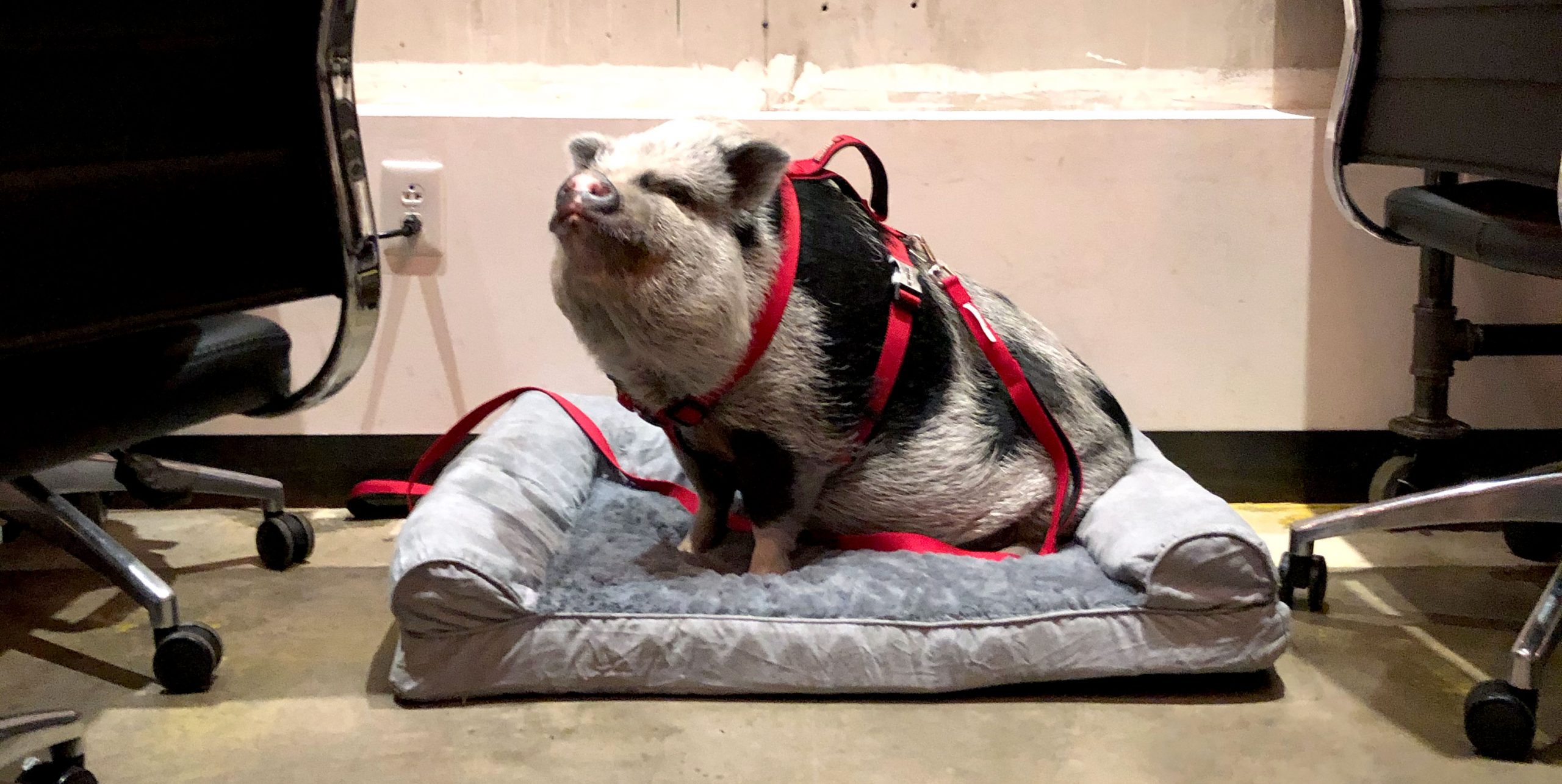
Hamilton the pig
How I Socialized Zara
When we brought Zara home at eight weeks, I knew that socialization was important and I made it one of my main priorities. We had her meet as many people and friendly dogs as we could. When we took her to puppy kindergarten, they recommended trying to expose her 100 new things in her first 100 days and gave us a checklist to use. Although I didn’t follow the checklist to the letter, I went out of my way for her to experience things like a motorcycle, or a horse, or an escalator. Especially in the first few months, my policy was to take her with us anytime we could. So we’d take her into all the dog-friendly stores, and let people greet her.
Zara was somewhat cautious as a puppy and was sometimes scared of new things. When we walked in our neighborhood, buses would pass by on the street. She would refuse to move as one drove past, and would stand there shaking. During experiences like this, we made sure to stay calm and not make a big fuss. If she was unsure about approaching something, I would praise her once she finally did. Eventually, she developed into a confident dog. Some of that is probably genetics. But I think the effort we put into socialization went a long way. Even though you can’t expose your dog to every type of situation, being proactive about socialization when they are young results in the dog having enough knowledge and positive experiences to handle a novel situations.

Zara encounters a horse when she was five months old. She was nervous at first and we stood several feet away, watching my friend pet the horse. I praised her and gave her some treats. After a few minutes, I encouraged her to come closer to the horse. I petted the horse while Zara was beside me. Eventually she started wagging her tail.
A Well-Socialized Adult Dog is Curious But Calm
Since Zara is a therapy dog, we often encounter new things when we go on visits to various places. Prior to the COVID-19 quarantine, we were visiting a company called Citrix once a month. They brought in therapy dogs for their employees to help decrease stress. The Citrix building in downtown Raleigh is very unique. When seated in the designated therapy dog area, we can see several large shipping containers that have been converted into conference rooms. There are two exposed elevators, multiple levels of catwalks, a movie screen, and people moving all around. The first time we visited the space, Zara sat calmly on her mat observing the space and watching all the people walk around. She was interested in what was happening but was not overloaded by the stimuli.
Another therapy dog owner, who had an 11-year-old German shepherd who was practically asleep, watched Zara with fascination. She was impressed that Zara was sitting so calmly in this busy environment, especially since she was a fairly young (she was four at the time) and active dog. Again, I realized that this was socialization at work. It doesn’t look like much when you’re around a well-socialized dog. Their behavior seems effortless and expected. It looks like nothing. But you know what you don’t see? Barking, lunging, jumping, tail tucking, wide eyes, pulling on the leash, freezing, or shutting down.

Our view inside the Citrix office building when Zara and I visit for therapy dog days. Image credit: bizjournals.com.
Socialization Will Pay Off
I’m not giving these examples as a way to brag about my dog training efforts. My dogs are far from perfect! Just ring the doorbell at my house and you’ll see. Instead, I’m offering them as something to think about when you are socializing a new puppy. I think it can be hard to imagine what the future looks like, especially for first-time dog owners. You might wonder if bothering to do all these things really matters. But the effort you put into socializing will pay off in the long run.
Did you spend a lot of time socializing your dog as a puppy? Do you consider him or her well-socialized? Let me know in the comments! :)
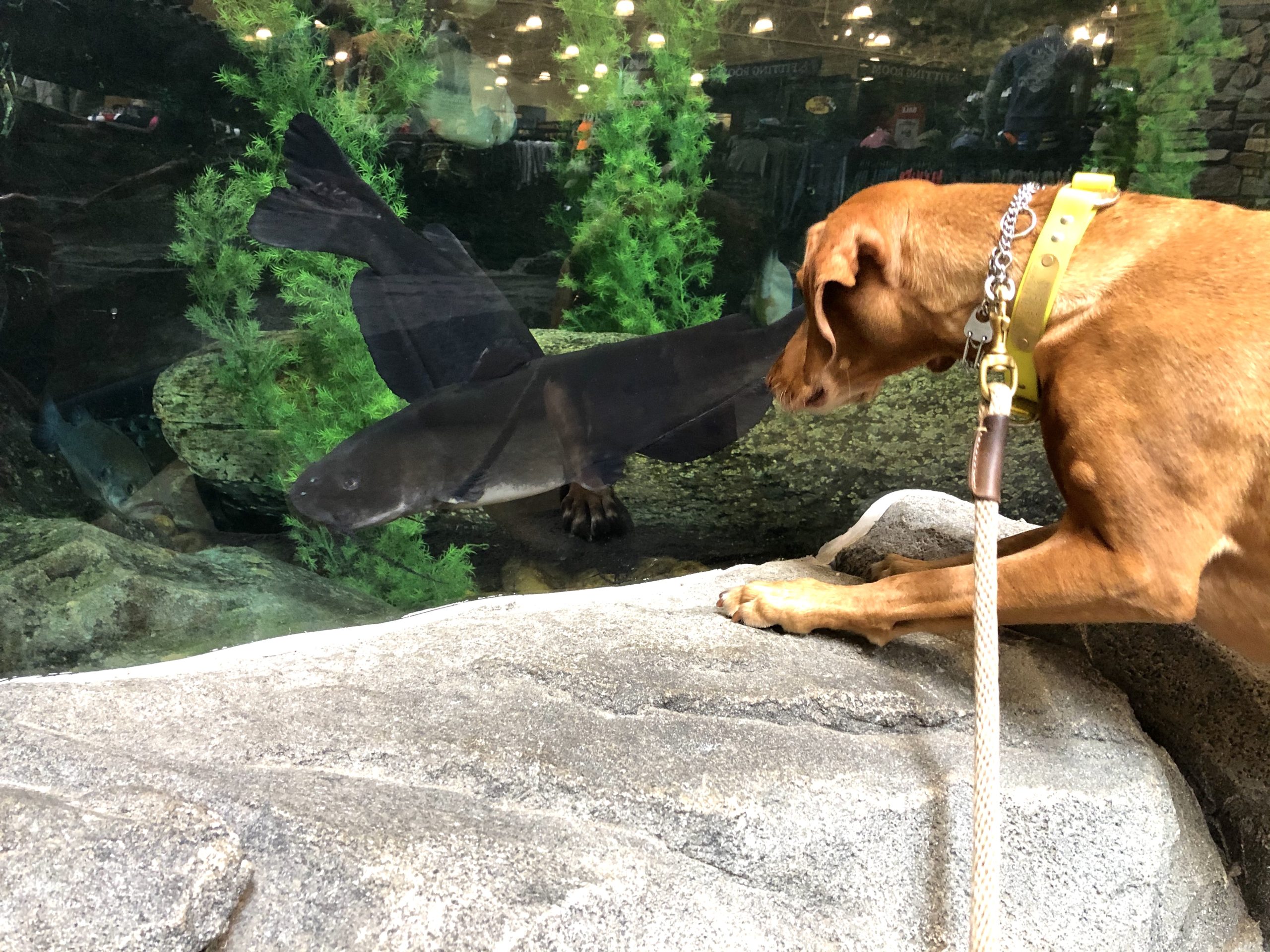


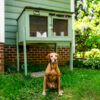
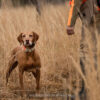
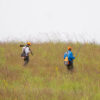
We’ve socialized Gilly since she was a young puppy, but ever since we sent her to a doggy day care a while back, she’s grown nervous around other dogs. She’s fine in a dog park, but she won’t play with them. On a leash, she’s fine with most dogs, but every once in a while she’ll bark / lunge at a dog walking by. We haven’t noticed a pattern. Our trainer says she isn’t aggressive, just nervous / anxious and we don’t need to worry about her biting (aka it’s all bark), but obviously it means we can’t take her into an office setting. Any tips?
Sorry for the delayed response! Dogs definitely can pick up bad habits at daycare or dog parks, especially if the environment is too much for them. It’s hard to diagnose without knowing all the details, but maybe she needs some confidence-building and focus activities. Like have her perform tricks and focus on you for treats while other dogs are passing by or around. Gradually increase the difficulty. You can also use the dog park for distractions – visit, but stay outside the fence and have her on a leash. You can use the dogs as safe distractions. You may have to start really far away, but I bet she would improve if you did it consistently.
I have a 5yr old American Staffordshire Lab Boxer cross (according to doggy DNA) but to strangers she just looks like 100 lbs of pitbull straining on her leash. I got her at 7 weeks approximately. Apparently too young because she doesn’t understand how to properly greet other dogs. She is submissive and immediately rushes them to lick their mouths and smell them. I was chastised by a fellow dog mom in the park one day for her behavior. I was shocked because I thought I had been doing what was best for my furbaby. Took her straight to the park at 4 months and socialized the heck out of her with dogs and people.
She is not aggressive at ALL. A huge baby who has stubborn streaks but ultimately doesn’t want to leave my side or let me go to the bathroom alone.
Not sure how to change her greetings
Suggestions?